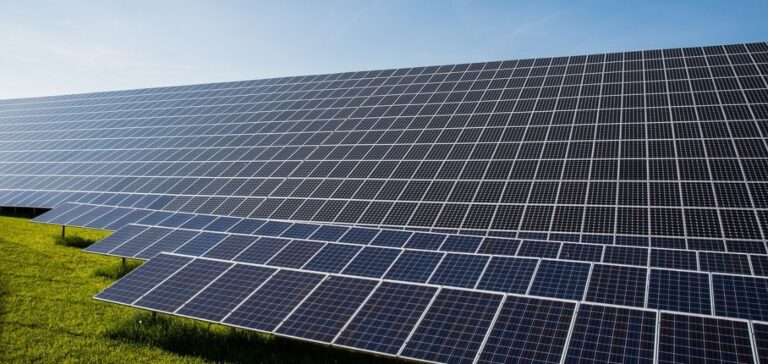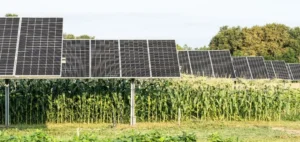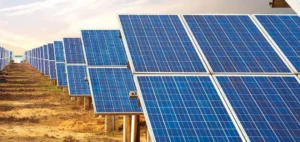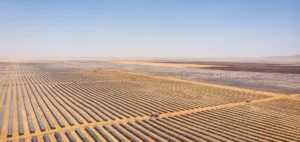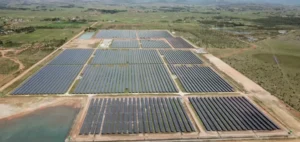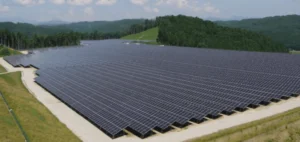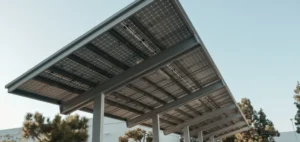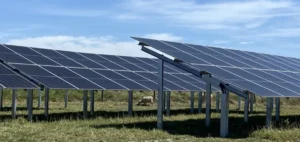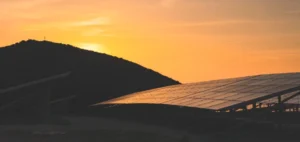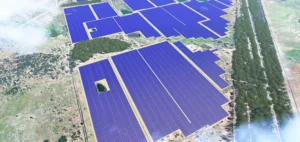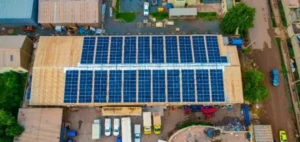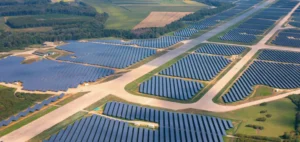In the heart of Gujarat’s desert, in northwest India, lies the sprawling Khavda solar park. This colossal project, near the border with Pakistan, symbolizes the nation’s ambitions in renewable energy. Spanning an area of 538 square kilometers—nearly equivalent to Mumbai—this site boasts 60 million photovoltaic panels and 770 massive wind turbines. Currently, it generates 1.73 gigawatts (GW) of energy and is projected to reach 30 GW by 2029, becoming the world’s most powerful power plant.
Behind this infrastructure are major players, including Adani Green Energy, a subsidiary of the Indian conglomerate Adani, with a strategic 20% stake from the French group TotalEnergies. As India commits to carbon neutrality by 2070, initiatives like Khavda cater to an energy demand that has doubled since 2000, driven by rapid economic growth, population expansion, and urbanization.
A Solar Revolution Driven by Ambitious Goals
India has set bold targets: tripling its renewable energy capacity by 2030 to reach 500 GW, including 300 GW from solar power. This trajectory allows the country to maintain its third-place ranking in the global green energy market. Indian giants like Adani and Reliance are fiercely competing in this space. Reliance, under Mukesh Ambani’s leadership, has already pledged a $10 billion investment for a 10 GW solar farm in southern India.
However, challenges loom. Adani faces corruption allegations in the United States, resulting in massive stock market losses and doubts about its ability to fund future projects. In response, TotalEnergies has temporarily suspended its investments with the group.
Falling Solar Costs, But Challenges Remain
Thanks to these massive projects, the cost of solar energy in India is plummeting. In recent tenders, renewable energy tariffs ranged between 4 and 5 rupees per kilowatt-hour (kWh), cheaper than coal. This decrease benefits industries and households alike.
In a New Delhi suburb, a Jubilant Food Works factory powers 14% of its operations with nearly 800 solar panels. Praveen Kumay of SunSource explains that this type of installation offers substantial savings, further enhancing solar energy’s appeal for businesses.
Coal and the Limits of Solar
Despite this impressive progress, challenges remain significant. Nearly 70% of India’s electricity still comes from coal, and demand is expected to grow by 50% by 2030. For now, solar power alone cannot bridge this gap.
Moreover, experts like Chetan Solanki from the Swaraj foundation warn that manufacturing solar panels entails environmental costs. The energy transition requires a holistic approach, including reducing overall energy consumption.
By combining colossal investments and technological innovation, India is leading the way while grappling with challenges that reflect the complexities of a global energy transition.


